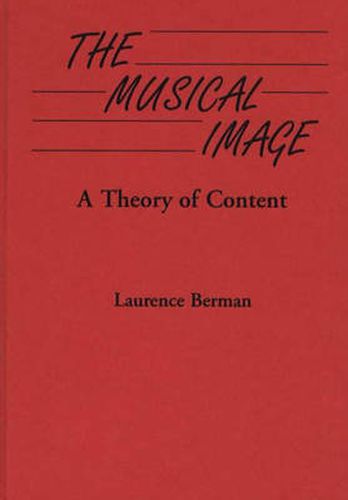Readings Newsletter
Become a Readings Member to make your shopping experience even easier.
Sign in or sign up for free!
You’re not far away from qualifying for FREE standard shipping within Australia
You’ve qualified for FREE standard shipping within Australia
The cart is loading…






A musical phrase, or, for that matter, a musical unit of any size or shape, becomes an image whenever we imagine it to be invested with a content whose origins lie outside music. Such a content, according to the theory developed here, constitutes the image’s conventional significance; it accounts for whatever strikes us about the image as having a common and familiar ring. That being so, the origins in question must be coincident with the fundamental ideas–the archetypes–that have been traditionally represented as underlying and unifying Western culture. As the theoretical constructs they are, arehctypes are never encountered directly. It is in the form of their local variants that we make contact with the archetypes, and it is at this local level that the present book sets its sights: style, the typical or shared element in the musical imagery of a time and place, is studies as a function of Zeitgeist, the complex of beliefs, values, and ideals of a community. The approach is both thematic and historical, in keeping with a key objective of archetypal criticism.
Far from repudiating the popular notion that music expresses the human emotions, this study attempts to recast emotion theory by examining musical images for kinds of behavior from which we may infer not only emotion (pathos, effectus) but also personality (ethos). Ethical and affective distinctions are very sharply drawn, in an effort to clarify and widen the vocabulary of musical commentary, as well as to provide cultural and historical backing for contents long considered the cliches of musical expression.
$9.00 standard shipping within Australia
FREE standard shipping within Australia for orders over $100.00
Express & International shipping calculated at checkout
A musical phrase, or, for that matter, a musical unit of any size or shape, becomes an image whenever we imagine it to be invested with a content whose origins lie outside music. Such a content, according to the theory developed here, constitutes the image’s conventional significance; it accounts for whatever strikes us about the image as having a common and familiar ring. That being so, the origins in question must be coincident with the fundamental ideas–the archetypes–that have been traditionally represented as underlying and unifying Western culture. As the theoretical constructs they are, arehctypes are never encountered directly. It is in the form of their local variants that we make contact with the archetypes, and it is at this local level that the present book sets its sights: style, the typical or shared element in the musical imagery of a time and place, is studies as a function of Zeitgeist, the complex of beliefs, values, and ideals of a community. The approach is both thematic and historical, in keeping with a key objective of archetypal criticism.
Far from repudiating the popular notion that music expresses the human emotions, this study attempts to recast emotion theory by examining musical images for kinds of behavior from which we may infer not only emotion (pathos, effectus) but also personality (ethos). Ethical and affective distinctions are very sharply drawn, in an effort to clarify and widen the vocabulary of musical commentary, as well as to provide cultural and historical backing for contents long considered the cliches of musical expression.